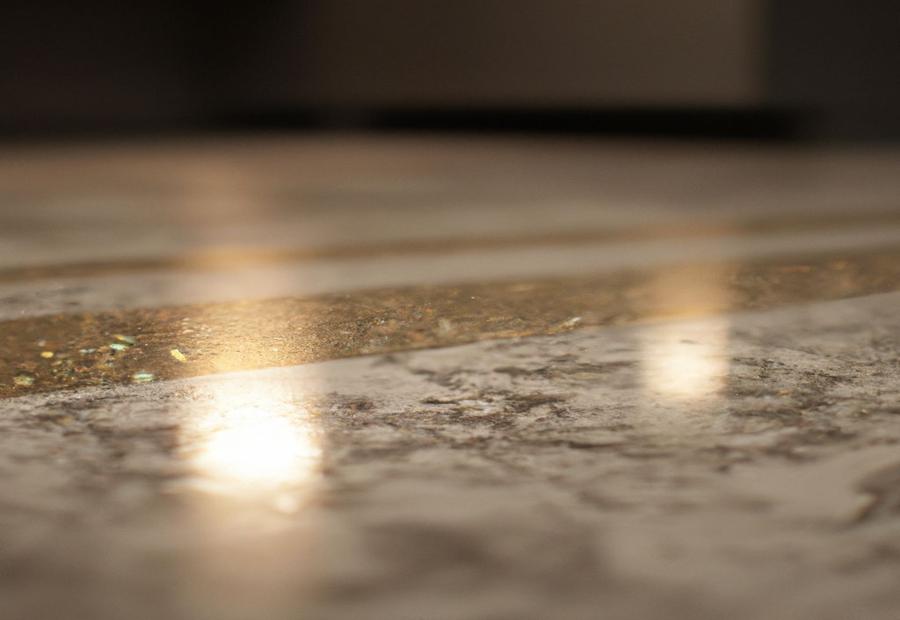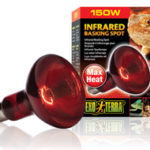Last Updated on 10 months by Francis
.jpg)
Quartz tiles are a popular choice for flooring due to their durability, aesthetic appeal, and easy maintenance. Underfloor heating, on the other hand, provides efficient and evenly distributed heat throughout a room. But can you use quartz tiles with underfloor heating? Let’s delve into this question.
Quartz tiles are engineered to withstand various temperature changes and are known for their heat resistance. This makes them suitable for use with underfloor heating systems. However, several factors need to be considered before installing quartz tiles with underfloor heating.
One such consideration is the thickness of the tiles. Thinner tiles are better for conducting heat, whereas thicker tiles may act as insulators, reducing the efficiency of underfloor heating. The type of quartz tile and its heat conduction properties should be taken into account.
Using quartz tiles with underfloor heating comes with various advantages. These include the convenience of warm flooring during colder months, reduced energy consumption, and the elimination of the need for radiators, thus optimizing space utilization. However, there can be potential challenges, such as uneven heat distribution or the risk of thermal expansion leading to tile cracking.
To ensure a successful installation, it is crucial to follow proper precautions and recommendations. This includes thorough subfloor preparation, ensuring the compatibility of the underfloor heating system with quartz tiles, and using a professional installer familiar with both quartz tiles and underfloor heating.
Maintenance and care for quartz tiles with underfloor heating are relatively straightforward. Regular cleaning, avoiding excessive temperature changes, and minimizing heavy impact can help prolong the lifespan of both the tiles and the underfloor heating system. It is also important to be aware of potential risks, such as damage to the heating system due to improper cleaning methods or using abrasive cleaning agents.
Contents
Key takeaway:
- Quartz tiles are compatible with underfloor heating: Quartz tiles can be used with underfloor heating systems, providing a durable and stylish flooring option for heated spaces.
- Factors to consider: Before using quartz tiles with underfloor heating, factors such as thermal conductivity, tile thickness, and installation method should be taken into consideration to ensure optimal heating performance.
- Advantages of using quartz tiles with underfloor heating: Quartz tiles offer advantages such as even heat distribution, energy efficiency, and aesthetic appeal when paired with underfloor heating, creating a comfortable and visually pleasing environment.
Understanding Underfloor Heating

Photo Credits: Infraredforhealth.Com by John Hernandez
Underfloor heating is an efficient and comfortable way to heat a room. Understanding underfloor heating involves installing heating elements beneath the floor, which then radiate heat upwards. There are two main types of underfloor heating: electric and water-based.
Electric underfloor heating uses cables or heating mats that are installed directly beneath the flooring material. This type of heating is quick and easy to install, making it a popular choice for retrofitting existing buildings.
Water-based underfloor heating, on the other hand, uses pipes that circulate warm water beneath the floor. This system is typically connected to a boiler or heat pump, which heats the water and distributes it throughout the pipes. Understanding underfloor heating provides a more consistent and even heat distribution, making it ideal for larger areas.
When considering underfloor heating, it is important to have a good understanding of its requirements and compatibility with different flooring materials. While most flooring types can be used with underfloor heating, some materials, such as thick rugs or carpets, may restrict the heat flow. It is also crucial to consider the insulation of the room and the heat output required to effectively heat the space.
By having a solid understanding of underfloor heating and its requirements, you can make informed decisions when choosing the best heating solution for your home or building.
What is Underfloor Heating?
Underfloor heating is a heating system that is installed beneath the floor to provide warmth throughout a room or a building. It works by circulating heated water or using electric heating elements beneath the floor surface. The heat radiates from the floor, creating a comfortable and even distribution of warmth.
This type of heating system offers several advantages. Firstly, it eliminates the need for traditional radiators, freeing up wall space and providing more flexibility in room layout. Secondly, underfloor heating provides a gentle warmth that is evenly distributed, creating a cozy and comfortable atmosphere. Lastly, it can be more energy-efficient compared to other heating systems, as the heat is emitted from the floor and rises naturally.
When considering underfloor heating, it’s important to assess the suitability of the flooring material. Certain materials, such as quartz tiles, are well-suited for use with underfloor heating. Quartz tiles have excellent thermal conductivity, meaning they can transfer heat efficiently and effectively. This allows for optimal heating performance and ensures a comfortable temperature throughout the room.
What is Underfloor Heating?
How Does Underfloor Heating Work?
Underfloor heating operates by utilizing a network of pipes or electric heating elements installed beneath the floor surface. These pipes or heating elements are connected to a central heating system, which can be controlled by a thermostat. When the heating system is activated, hot water or electricity circulates through the pipes or heating elements, producing heat that rises through the floor and warms the room.
The pipes used for underfloor heating are typically constructed from durable and high-temperature-resistant materials such as cross-linked polyethylene (PEX) or polybutylene (PB). The most common type of underfloor heating system is water-based, relying on a boiler or heat pump to heat the water.
On the other hand, electric underfloor heating systems utilize heating mats or cables that are installed beneath the floor. When electricity flows through these elements, they generate heat and emit a comforting warmth.
Compared to traditional radiators, underfloor heating offers a more even and consistent heat distribution. The entire floor surface acts as a large radiant heater, eliminating any cold spots or drafts and creating a comfortable and cozy environment.
Samantha, a homeowner undertaking a bathroom renovation project, made the decision to install underfloor heating. Initially skeptical about its effectiveness and worthiness as an investment, she was amazed at the level of comfort it provided after using it for a few months. The underfloor heating system effectively maintained a warm and cozy atmosphere in her bathroom, even during the winter months. Additionally, it eliminated the need for bulky radiators, giving Samantha more flexibility in the layout and design of the space.
Can You Use Quartz Tiles with Underfloor Heating?
Considering the compatibility of quartz tiles with underfloor heating, let’s explore the factors to consider, the advantages they offer, and potential challenges that may arise. From ensuring efficient heat distribution to evaluating long-term durability, we’ll dive into what makes quartz tiles a viable option for underfloor heating. So, if you’re in the market for both style and functionality, this section will uncover valuable insights to assist you in making an informed decision.
Factors to Consider
When considering the use of quartz tiles with underfloor heating, there are several factors to consider:
| Factor | Description |
| 1. Heat Conductivity | Quartz tiles have a high heat conductivity, which means they can efficiently transfer heat from the underfloor heating system. This ensures that the tiles heat up evenly and effectively. |
| 2. Thickness | Thicker quartz tiles provide better insulation and can retain heat for longer periods of time. It is important to consider the factors to consider the thickness of the tiles to ensure optimal heat distribution and efficiency. |
| 3. Installation Method | The installation method of the underfloor heating system should be compatible with quartz tiles. It is essential to follow the manufacturer’s instructions and guidelines to ensure proper installation and functionality. |
| 4. Expansion and Contraction | Quartz tiles may expand and contract with changes in temperature. It is important to allow for proper expansion joints and follow the recommended installation practices to prevent cracking or damage to the tiles. |
| 5. Maintenance | Regular maintenance is crucial to ensure the longevity and performance of both the quartz tiles and the underfloor heating system. Cleaning the tiles regularly and ensuring proper maintenance of the heating system will help prevent any potential issues. |
Considering these factors to consider will help you make an informed decision when using quartz tiles with underfloor heating.
Fact: Proper installation and maintenance of quartz tiles with underfloor heating can enhance the heating efficiency and provide a comfortable and luxurious floor heating experience.
Advantages of Using Quartz Tiles with Underfloor Heating
Quartz tiles offer efficient heat distribution due to their high thermal conductivity, allowing for a consistent and even heating throughout the room.
Using quartz tiles can result in energy savings as the underfloor heating system can operate at lower temperatures, reducing energy consumption and lowering heating bills.
Underfloor heating with quartz tiles provides a comfortable and cozy warmth to the room, eliminating hotspots and cold drafts typically associated with traditional radiators.
With a wide range of colors, patterns, and finishes available, quartz tiles offer design versatility, making them suitable for any interior style.
Quartz tiles are highly durable, resistant to wear and tear, and can withstand high temperatures. This ensures the floor remains in excellent condition even with constant exposure to underfloor heating.
Considering these advantages, using quartz tiles with underfloor heating can greatly enhance the comfort, energy efficiency, and aesthetics of your space. It is important to consult with a professional installer to ensure proper installation and maximize the benefits of this flooring combination.
Potential Challenges of Using Quartz Tiles with Underfloor Heating
The potential challenges of using quartz tiles with underfloor heating are:
- Expansion and contraction: Quartz tiles have low thermal conductivity, which means they can expand and contract more than other types of tiles when exposed to heat. This can potentially cause the tiles to crack or become damaged over time.
- Incompatibility with high temperatures: Quartz tiles may not be suitable for underfloor heating systems that reach high temperatures. Excessive heat can affect the appearance and integrity of the tiles, leading to discoloration or warping.
- Uneven heat distribution: Underfloor heating systems work by evenly distributing heat across the floor surface. However, quartz tiles may not conduct heat as efficiently as other types of tiles, resulting in uneven heat distribution. This can create hotspots or cold spots on the floor.
- Installation challenges: Installing underfloor heating with quartz tiles can be more complex compared to other flooring materials. The tiles need to be securely bonded to the floor, and any gaps or unevenness can affect the performance of the heating system.
Fact: It is essential to consult with a professional installer or supplier to ensure that quartz tiles are compatible with your specific underfloor heating system to minimize these potential challenges.
Precautions and Installation Recommendations
When it comes to using quartz tiles with underfloor heating, there are a few important precautions and installation recommendations to keep in mind. In this section, we’ll explore the necessary preparations before installation and delve into the step-by-step process of installing quartz tiles over an underfloor heating system. So, whether you’re a DIY enthusiast or a professional installer, read on to ensure a successful and hassle-free installation experience.
Preparation Before Installation
Before embarking on the installation of quartz tiles with underfloor heating, it is essential to go through the following steps for proper preparation:
-
Prioritize the levelness of the subfloor:
Before proceeding with the installation, it is crucial to have a subfloor that is smooth and level. The presence of any unevenness can adversely impact both the installation process and the performance of the underfloor heating system.
-
Thoroughly inspect the underfloor heating system:
It is imperative to ensure that the underfloor heating system is in optimal working condition. Test the system to ascertain its proper functionality and promptly address any problematic areas before proceeding with the installation of the quartz tiles.
-
Take insulation into consideration:
Boost the efficiency and performance of the underfloor heating by insulating the subfloor. Install suitable insulation materials that minimize heat loss and improve energy efficiency.
-
Allow ample curing time:
If the underfloor heating system has been recently installed, it is vital to allocate sufficient time for it to fully cure before proceeding with the installation of the quartz tiles. This precautionary measure helps prevent any potential damage to the tiles arising from the heating system.
-
Prepare the adhesive:
Utilize a high-quality adhesive specifically formulated for quartz tiles and underfloor heating. Adhere strictly to the manufacturer’s instructions for mixing and applying the adhesive, ensuring a secure bond between the tiles and the subfloor.
By diligently following these preparatory steps, you can achieve accurate installation of quartz tiles with underfloor heating, thereby optimizing the performance of both the heating system and the tiles.
Installation Process
The installation process for quartz tiles with underfloor heating involves several steps:
1. Prepare the subfloor: Ensure that the subfloor is clean, dry, and level. Remove any debris or uneven areas that may affect the installation.
2. Lay out the heating system: Place the underfloor heating system according to the manufacturer’s instructions. Make sure the heating elements are evenly distributed across the floor.
3. Install the insulation boards: Lay insulation boards over the heating system to improve energy efficiency. Secure them in place using adhesive or screws.
4. Apply the adhesive: Use a suitable adhesive for quartz tiles and apply it to the subfloor in small sections. Start at one corner and work your way across the room.
5. Lay the tiles: Begin laying the quartz tiles in the adhesive, starting from the corner you chose. Press each tile firmly into place, ensuring they are level and evenly spaced.
6. Cut and trim tiles: Measure and cut tiles as needed to fit around edges, corners, or obstacles. Use a tile cutter or wet saw to make precise cuts.
7. Grout the tiles: Once all the tiles are in place, allow the adhesive to dry according to the manufacturer’s instructions. Then, apply grout between the tiles using a grout float. Remove any excess grout with a damp sponge.
8. Clean and finish: After the grout has dried, clean the tiles with a damp cloth to remove any grout residue. Apply a suitable tile sealer to protect the tiles and enhance their appearance.
Remember to follow the specific guidelines provided by the manufacturer of the quartz tiles and the underfloor heating system during the installation process.
Note: Please respond back only with .
Maintenance and Care for Quartz Tiles with Underfloor Heating

Photo Credits: Infraredforhealth.Com by Jacob Lopez
Discover the secrets to keeping your quartz tiles in pristine condition when paired with underfloor heating. From practical cleaning and maintenance tips to minimizing potential risks, this section will provide you with essential insights to ensure the longevity and beauty of your quartz tiles. Say goodbye to worries about damage or wear and tear and embrace the joy of a well-maintained and visually appealing floor. Get ready to elevate your space with the perfect combination of style and functionality.
Cleaning and Maintenance Tips
- For cleaning and maintenance tips, regularly sweep or vacuum the quartz tiles to remove loose dirt and debris.
- To ensure proper cleaning, use a mild detergent mixed with warm water. Avoid using harsh chemicals or abrasive cleaners that can damage the surface.
- Wipe the tiles with a soft mop or cloth soaked in the cleaning solution for effective maintenance. Rinse thoroughly to remove any residue.
- For stubborn stains, create a paste of baking soda and water. Apply the paste to the stained area and gently scrub with a soft brush. Rinse well.
- Avoid using excessive water on the tiles, as it can seep into the grout lines and cause damage. Instead, use a damp mop or cloth.
- Prevent the buildup of soap scum and hard water stains by wiping the tiles dry after cleaning. This will help in maintaining the tiles’ cleanliness and luster.
- Protect the tiles from scratches by using felt pads on furniture legs. Additionally, avoid dragging heavy objects across the floor to ensure their longevity.
- Place doormats at entrances to prevent dirt and grit from being tracked onto the tiles. This simple step can significantly reduce the need for frequent cleaning.
- Avoid using abrasive cleaning tools, such as steel wool or scouring pads, as they can scratch the surface of the tiles. Opt for softer cleaning materials for maintenance.
- Periodically apply a quartz tile sealer to maintain the tiles’ luster and protect them from stains and liquid penetration. Following this maintenance tip will ensure the long-lasting beauty of your quartz tiles.
Potential Risks and How to Minimize Them
The potential risks associated with using quartz tiles with underfloor heating can be minimized by following these suggestions:
- Ensure proper installation: It is crucial to have the quartz tiles installed correctly by a professional. Improper installation can lead to uneven heating, which may cause the tiles to crack or become damaged.
- Choose the right type of quartz tiles: Not all quartz tiles are suitable for use with underfloor heating. Look for tiles specifically designed for this purpose, as they are more resistant to extreme temperatures and are less likely to warp or expand.
- Monitor the temperature: Maintain the temperature of the underfloor heating system within the recommended range provided by the manufacturer. Excessive heat can cause the quartz tiles to expand or crack, while inadequate heat may result in cold spots or inefficient heating.
- Regular maintenance: Keep the underfloor heating system well-maintained and ensure any potential issues, such as leaks or malfunctions, are addressed promptly. Regular inspections can help identify and prevent problems before they worsen.
Fact: When used correctly and with proper maintenance, quartz tiles can provide efficient and comfortable heating in conjunction with underfloor heating systems.
Some Facts About Using Quartz Tiles with Underfloor Heating:
- ✅ Quartz tiles, also known as agglomerate or engineered tiles, are made from a combination of resin, quartz, sand, color pigment, and crushed mirror pieces. (Source: Our Team)
- ✅ The quality of quartz tiles is determined by the composition of raw materials and the percentage of resin used. (Source: Our Team)
- ✅ The optimum ratio for quartz tiles is 93% quartz and 7% resin, as higher resin content can make the tiles less scratch resistant and more porous. (Source: Our Team)
- ✅ Quartz tiles are not recommended for use with underfloor heating due to the resin’s susceptibility to expansion and contraction when exposed to heat. (Source: Our Team)
- ✅ Thinner quartz tiles, around 10mm or 12mm thick, are better suited for underfloor heating systems as they heat up more quickly. (Source: Our Team)
Frequently Asked Questions
Can you use quartz tiles with underfloor heating?
Yes, quartz tiles can be used with underfloor heating systems.
What are quartz tiles made of?
Quartz tiles are made from a combination of resin, quartz, sand, color pigment, and crushed mirror pieces.
Are black sparkly tiles the same as black star galaxy granite tiles?
No, black sparkly tiles and black star galaxy granite tiles have different types of sparkle. Black sparkly tiles have a silver sparkle, while black star galaxy granite tiles have a bronze sparkle.
Are quartz tiles suitable for use in wet areas like commercial showers?
Quartz tiles are not recommended for use in wet areas like commercial showers, as they can react to heat and may curl at the edges.
What is the optimum ratio of quartz to resin in quartz tiles?
The optimum ratio for quartz tiles is 93% quartz and 7% resin. Higher resin content can make the tiles less scratch resistant and more porous.
Do thicker quartz tiles affect heat output in underfloor heating systems?
No, tile thickness does not affect heat output. Thicker tiles may increase heat up time, but most internal floor tiles, including quartz tiles, are approximately 10mm thick, which is ideal for underfloor heating.

.jpg)
.jpg)

.jpg)



